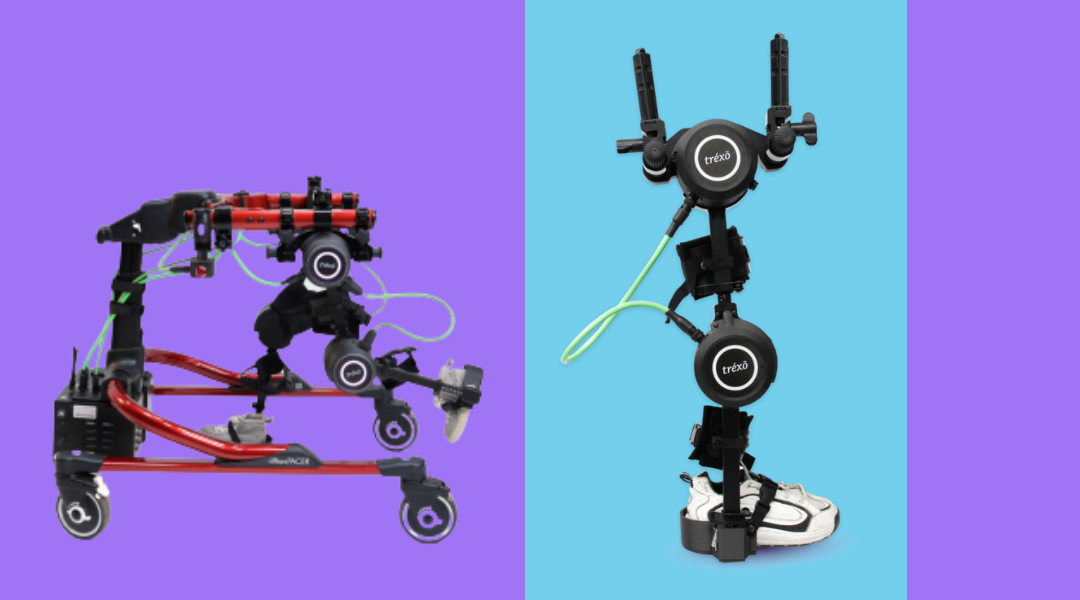Trexo Home Insights from Manmeet, CEO and co-founder of Trexo:
When Rahul and I built the first Trexo for my nephew Praneit, we were filled with determination to not only help my nephew but to close a glaring gap in medical devices for pediatric ambulation. Accomplishing that and watching my nephew take his first steps remain my proudest moment. We conquered our first hurdle. An at-home robotic gait trainer for kids now exists.
Fast forward to 2023 – our determination has not waivered. Our vision is bold and ambitious. Our goal is achieving significant, meaningful impact for as many kiddos as possible, through the Trexo Home and Trexo Plus. To date, the kiddos in the Trexo community have walked 40 million steps – the equivalent of two trips around the world.
We now face our second hurdle – finding a way for Trexo to be accessible to as many children as possible.
As we work to achieve this, I’ve personally been asked:
Why is this machine so expensive? Why does it cost as much as a car? Are you just another company trying to profit off disability? Is Trexo made of gold?
I wanted to address this and give you the answers you are looking for.
The reality is, there are a lot of costs associated with building a robotic device as complex as the Trexo. I understand that most people don’t realize what goes into building and maintaining a device like this. It is different than building a toy robot. High quality parts, motors and electronics that run safely and reliably for a long time, are needed.
After we build the Trexo for your child, customized with the accessories needed, we offer training, goal setting and on-going support. Additionally, we offer a comprehensive warranty that covers repairs and maintenance. All of this results in significant costs for well trained Customer Success and Support teams.
The biggest cost however, is the engineering and research and development (R&D) work.
Do you remember the very first version of the cell phone? It was big, clunky, and very limited. Cell Phones have now evolved into small devices that can manage pretty much all areas of our lives, while also making calls. Without investment into R&D, the cell phone would have become an antiquated device that no one would use, in less time than you may imagine. It is the same with robotics. Without our commitment to advancing the technology, the device would lose its effectiveness for kiddos.
As I shared, Trexo was born of a deeply personal desire to help my nephew and it has become so much more. In the early days, Rahul and I thought deeply and carefully about how we could make the biggest impact with this technology. We considered sharing the entire design, software and architecture online for anyone to copy and build.
After analysis, we determined that would result in the least impact. Not only would there likely be no one that had the ability to build and maintain this device, but the hundreds of design improvements we have made (which have proven to be very useful to so many kiddos) would not exist. The device would be dated. And that is only taking into account what has already been done, there are hundreds more improvements to come. As we release these improvements to Trexo users, they get a continuously upgraded device.
The Trexo Home is not made of gold, and we aren’t trying to profit off disability. We are simply delivering the safest, most effective device for children.
Now is when that next big hurdle comes in – getting insurance coverage.
We are working diligently towards getting insurance coverage. We are working with doctors on the necessary studies to document the impact on health so insurance companies will grant Trexo pre-approval.
Until then, the Trexo team has worked hard to gather resources on funding options, grants and fundraising. We are seeing some insurance approvals come through now. We share this information on webinars, emails, and on social media.
We are dedicated to overcoming this and all hurdles we will face. We are confident that, over time, all insurance companies will see how having kids walking in the Trexo can not only improve health, quality of life, but also save them money in the long run.


Recent Comments